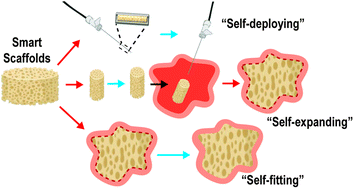Smart scaffolds: shape memory polymers (SMPs) in tissue engineering
Abstract
Smart scaffolds based on shape memory polymer (SMPs) have been increasingly studied in tissue engineering. The unique shape actuating ability of SMP scaffolds has been utilized to improve delivery and/or tissue defect filling. In this regard, these scaffolds may be self-deploying, self-expanding, or self-fitting. Smart scaffolds are generally thermoresponsive or hydroresponsive wherein shape recovery is driven by an increase in temperature or by hydration, respectively. Most smart scaffolds have been directed towards regenerating bone, cartilage, and cardiovascular tissues. A vast variety of smart scaffolds can be prepared with properties targeted for a specific tissue application. This breadth of smart scaffolds stems from the variety of compositions employed as well as the numerous methods used to fabricated scaffolds with the desired morphology. Smart scaffold compositions span across several distinct classes of SMPs, affording further tunability of properties using numerous approaches. Specifically, these SMPs include those based on physically cross-linked and chemically cross-linked networks and include widely studied shape memory polyurethanes (SMPUs). Various additives, ranging from nanoparticles to biologicals, have also been included to impart unique functionality to smart scaffolds. Thus, given their unique functionality and breadth of tunable properties, smart scaffolds have tremendous potential in tissue engineering.



 Please wait while we load your content...
Please wait while we load your content...